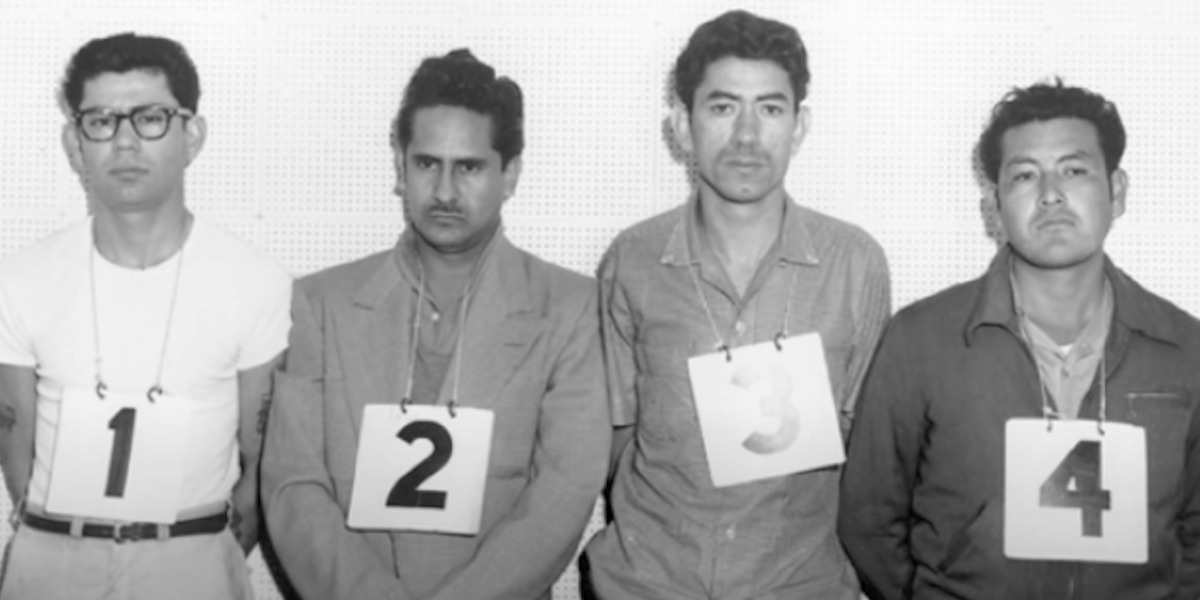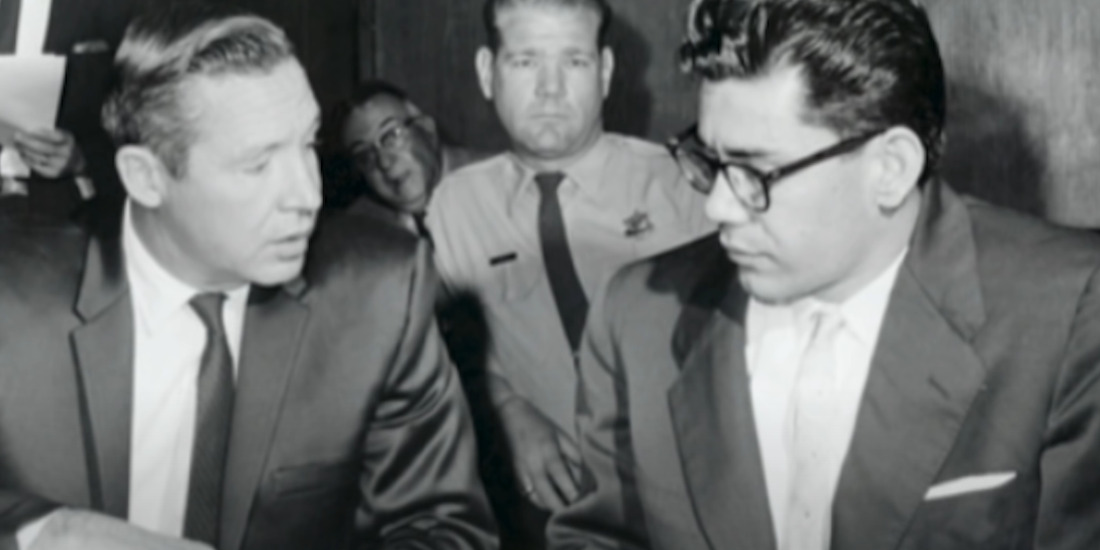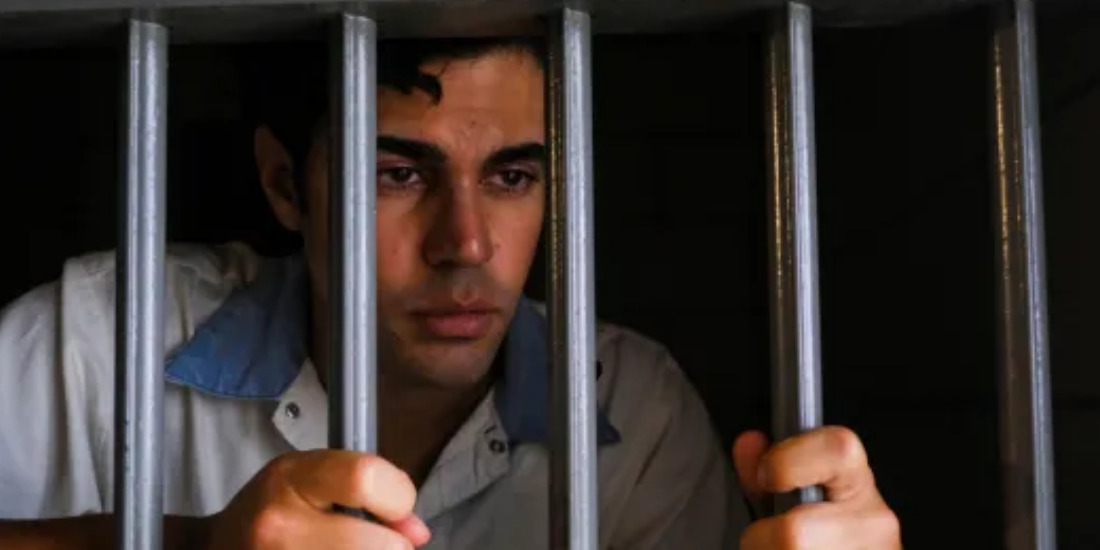In presenting the history behind the Miranda Warnings, Michelle Danner’s crime film ‘Miranda’s Victim’ equips the perspective of Patricia “Trish” Weir, the young woman who underwent traumatic abuse at Ernesto Miranda’s hands. In 1963, the 18-year-old girl fell victim to Miranda, who kidnapped her out of the city and raped her in the dark desert. Yet, instead of staying silent, Trish exhibited fierce courage by reporting the crime to the police and testifying against Miranda in court.
Although the film focuses on Trish’s story, the narrative still delves into Ernesto Miranda’s experiences. Thus, it delivers a well-rounded and nuanced understanding of the landmark U.S. judicial case of Miranda’s retrial following the inadmissibility of his confession without trivializing its sensitive origins. Since the film is based on a real-life story detailing a crucial part of the country’s justice system’s history, people might wonder what became of Ernesto Miranda, of the eponymous Miranda Rights, after his court trials.
Ernesto Miranda’s Retrial and Convictions
On March 13, 1963, a few days after one Patricia “Trish” Weir reported her kidnapping and sexual assault, two Detectives, Carroll Cooley & his partner, tracked Ernesto Miranda down as their prime suspect. While the investigation was underway, one of Weir’s family members spotted a car in the neighborhood that matched the description the woman provided from the night of her assault. Thus, with a partially noted number plate, the police identified it as the 1953 Packard, belonging to Twila Hoffman, Miranda’s common-law wife.

As a result, Cooley and his partner took Miranda to the police station, where Weir identified the man as her abuser. Whether the same was executed through a lineup or otherwise remains unclear. Nevertheless, after his initial identification, Miranda underwent an interrogation, and the cops emerged with his written confession. While the police maintained that they never threatened Miranda during the two-hour interrogation, Miranda claimed a different story, including one where the cops threatened to “throw the book” at him.
Either way, Miranda’s confession detailed incriminating admissions, such as “grabbed her [Weir] by the arm and asked to get in car. Got in car without force tied hands and ankles.” Consequently, when the time came for his trial on June 20, 1963, at Maricopa County Courthouse, the jury came out with a unanimous verdict of Miranda’s guilt. Although his court-appointed defense lawyer, Alvin Moore, attempted to have Miranda’s confession dismissed— on account of the man providing the same while in custody without an attorney present— his request was declined.
At the time, there was no protocol preventing such confessions from being permissible in a court of law. Thus, Miranda received a sentence of 20-30 years in prison. Nevertheless, 1966 brought a relative silver lining for the man. Under Chief Justice Earl Warren’s leadership of the Supreme Court, an era dedicated to protecting constitutional rights, Lawyer John Frank sought to appeal Miranda’s case, invoking the Sixth Amendment’s right to counsel.
While the case led to the inception of Miranda rights, it also rendered Ernesto Miranda’s confession, the leading evidence of his conviction, inadmissible. As a result, Miranda’s case was retried. Weir returned for a testimony, and Miranda’s previous partner, Twila Hoffman, also came out as a witness. As it would turn out, Miranda confessed his crime to Hoffman following his initial arrest in 1963.
Thus, with the women’s testimony, Miranda’s 1967 retrial ended in a similar conviction even without his confession as evidence. Ultimately, Miranda was sentenced to 20-30 years of imprisonment in the Arizona State Prison.
Parole and Life After Prosecution
The inception of Miranda Warnings, as an integral part of the country’s judicial system, remains one of the most significant and influential aftermaths of Miranda’s legal battle. However, the man faced a few life changes of his own after his prosecution. Although Miranda received a longer sentence, he managed to get out on parole in 1972. Still, after a parole violation, the man returned to prison only to get out on parole once again in 1975.

Consequently, Miranda was free of the prison’s confines while still carrying some repercussions for his crimes. Yet, he also put his newfound fame as a way to earn money by selling signed “Miranda Cards,” with the Miranda Warnings written on them, in Phoenix for somewhere around a buck and a half. However, January 31, 1976, found the man at Deuce, an area ripe with shady bars. At one such bar, La Amapola, Miranda got caught up in a fight with two Mexican men, who were in the country illegally, over some drinks and playing cards.
As a result, Miranda ended up fatally wounded in the fight, with a stab wound in his chest and stomach. By the time the ambulance arrived with him at the Good Samaritan Hospital, Miranda had already passed away. Although the man who killed Miranda managed to flee the scene, the police managed to catch his accomplice—and ironically enough, read him the Miranda Warnings as they took him into custody.
Read More: Twila Hoffman: Where is Ernesto Miranda’s Ex-Girlfriend Now?


You must be logged in to post a comment.